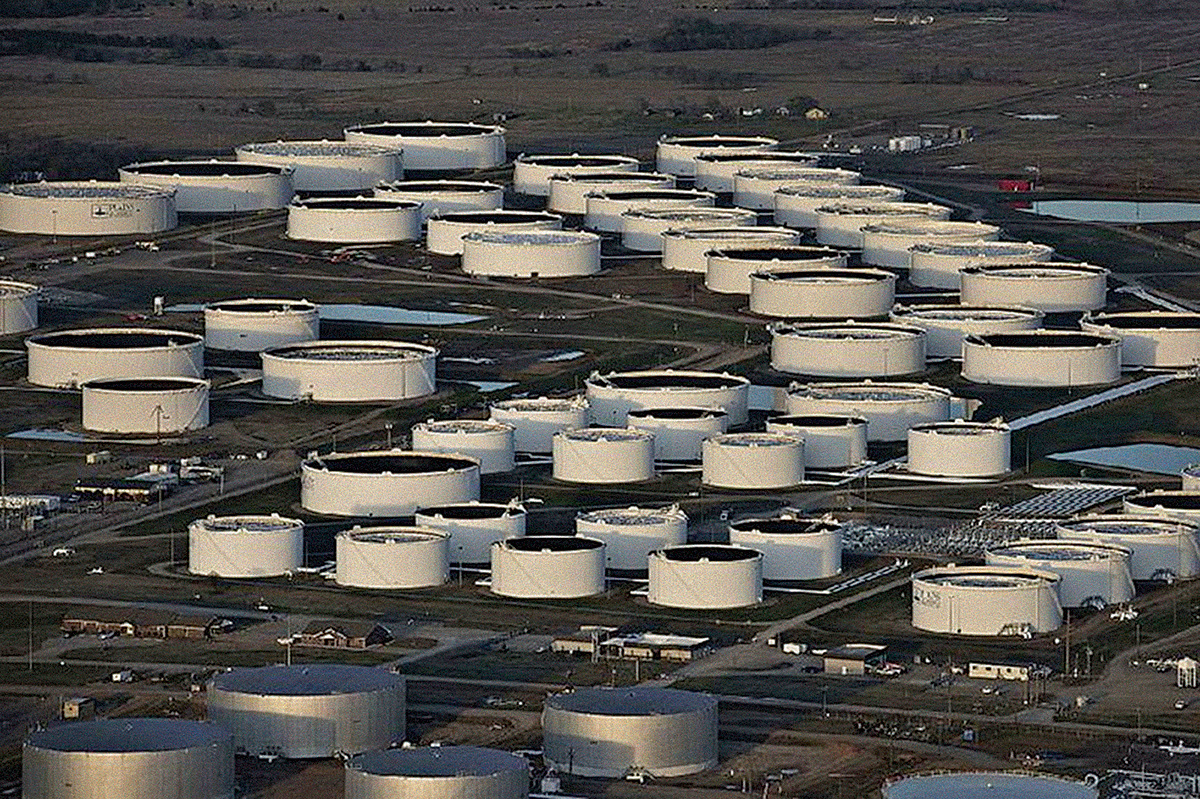
Since every global citizen is adjusting to a new paradigm shift, the crude oil market is also aligning itself to a ‘new normal’ with an apparent lower demand for fuel and decline in the production of oil. Crude oil had dropped during the peak of the pandemic slumping to the lowest value of $6.54 per barrel in the spot market. In the futures market, the value had broken into the negative territory for the first time in its history. Between the breakdown in the demand and the lower refinery utilisation rates, reservoir levels for oil have finally peaked and now have commenced declining as the global economy recovers from the Covid 19 situation. That’s where our story comes in; the tale of Cushing, Oklahoma.
Center of Oil Universe
The delivery location for the NYMEX benchmark Light Sweet Crude Oil futures contract is Cushing, Oklahoma. In retrospection, the world oil prices are arguably controlled by the amount of oil stored in it. The reason being that Cushing is the rating point for WTI (West Texas Intermediate) oil value, the most-traded oil futures contract in the financial markets. In 1983, when the WTI futures contract was initially listed in 1983, Cushing was a vivacious hub for cash market trading of oil with a robust network of pipelines, refineries and storage terminals. Known as the Pipeline Crossroads of the world, Cushing interlinks two dozen pipelines and 20 storage terminals. As per the US Energy Information Administration (EIA), the storage capacity in Cushing is 90 million barrels of the total shell capacity as on September 2019. In hindsight, the storage capacity has grown exponentially over the previous year’s accounting for 13% of the total US oil storage. As per records, the levels of crude oil inventory touched a record high of 69 million barrels in storage capacity in early 2017.Diverse Delivery Mix
Cushing is not just the crucial hub for storage and pipeline capacity but it is renowned also for the diverse mix of operators. Research shows that the WTI futures contract allows for delivery through Enterprise or Enbridge facilities in Cushing or at a facility that is connected to either of them. Providing a key connection point, the Enterprise terminal is capable of facilitating the transfer of tens of millions of barrels of crude oil each month. After the termination of the WTI futures contract, a commercial organisation that selects to take delivery must have storage/pipeline capacity connected to one of the NYMEX delivery location points in Cushing. From here onwards, the organisation can choose either to take the oil into storage barrels or a pipeline connecting the Midwest refineries and the Gulf Coast region.A Year of Disappointments
With Covid 19 gaining momentum across the globe, the pandemic inflicted extreme pressure on the oil industry in the first half of 2020. As most products under the energy categories took a beating, the oil refining organisations were quick to respond to the price signals driven mostly by the refinery utilisation rate which slumped below 75% during the peak summer season as compared to a time when the rates usually rise over 90%. With the re-opening of global economies and the refining sector ramping up production, the inventory levels in Cushing has lowered significantly since the peak level of 65.4 million barrels in storage on May 1, 2020. Along with the swelling global oversupply, the US crude oil production dropped to 10.5 million barrels per day in June 2020 vis-à-vis 13 million in December 2019. The supply glut along with the collapse in the global demand created a price arbitrage that was unfavorable for the US crude oil exports. As per trade statistics, the exports stood at 2.5 million barrels per day in June, down from 3.7 million barrels per day registered in December 2019.The Way Forward
The crude oil futures contracts in the form of WTI futures continue to reflect the fundamentals of the oil market immensely affected by the unparalleled impacts of Covid 19 in the form of deteriorating demand for crude, a glut in global supply and high levels of storage utilisation in the US. The key nexus of the fundamentals intersect at the Cushing point and will continue to exert maximum pressure on the oil industry for the remainder of 2020 and well into 2021 as organisations respond to the price signals linked with the ‘new normal’ in the global economy.
Published Date: September 14, 2020, 12:00 am
Post Comment
RELATED Commodity Perspective




